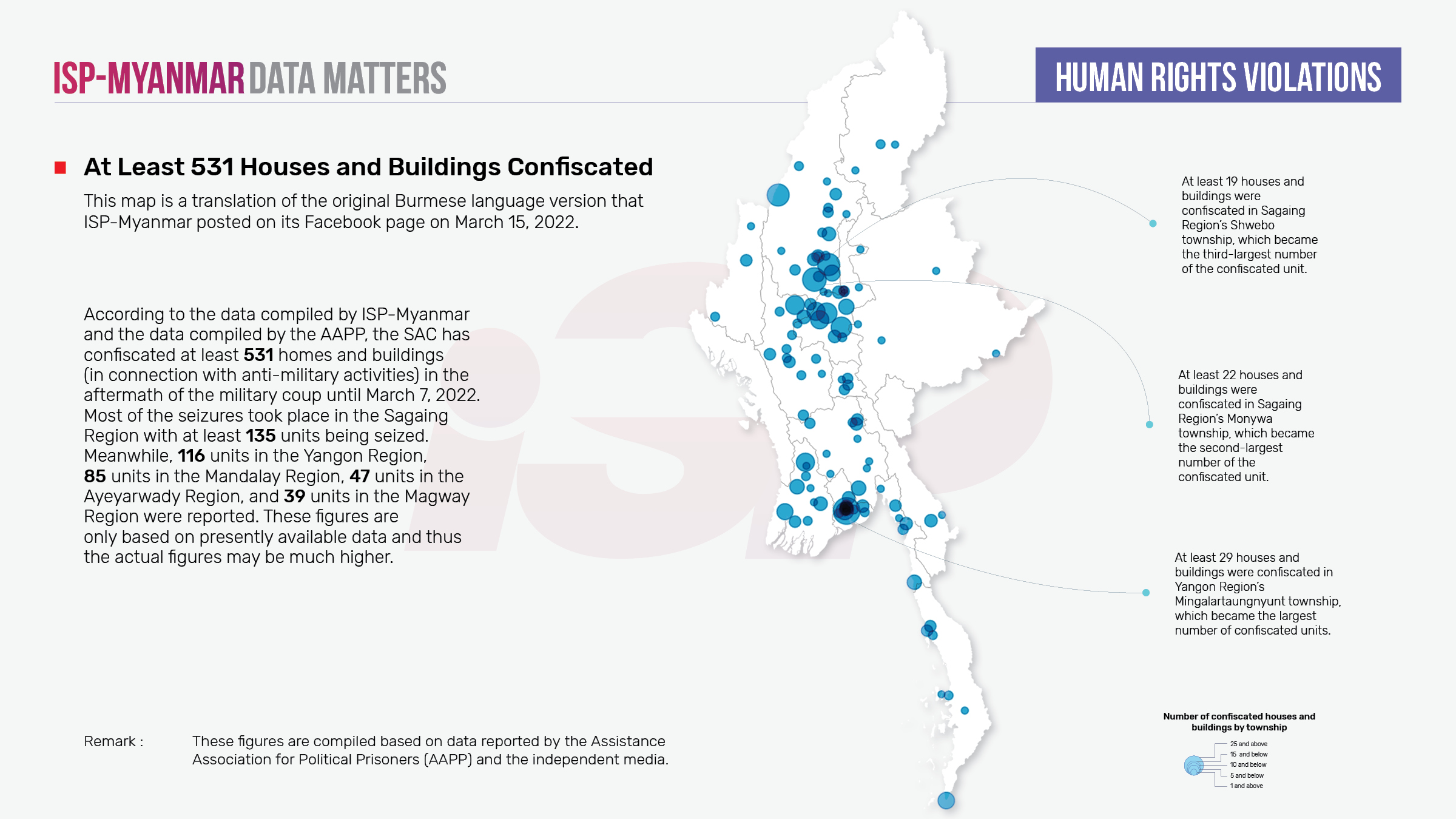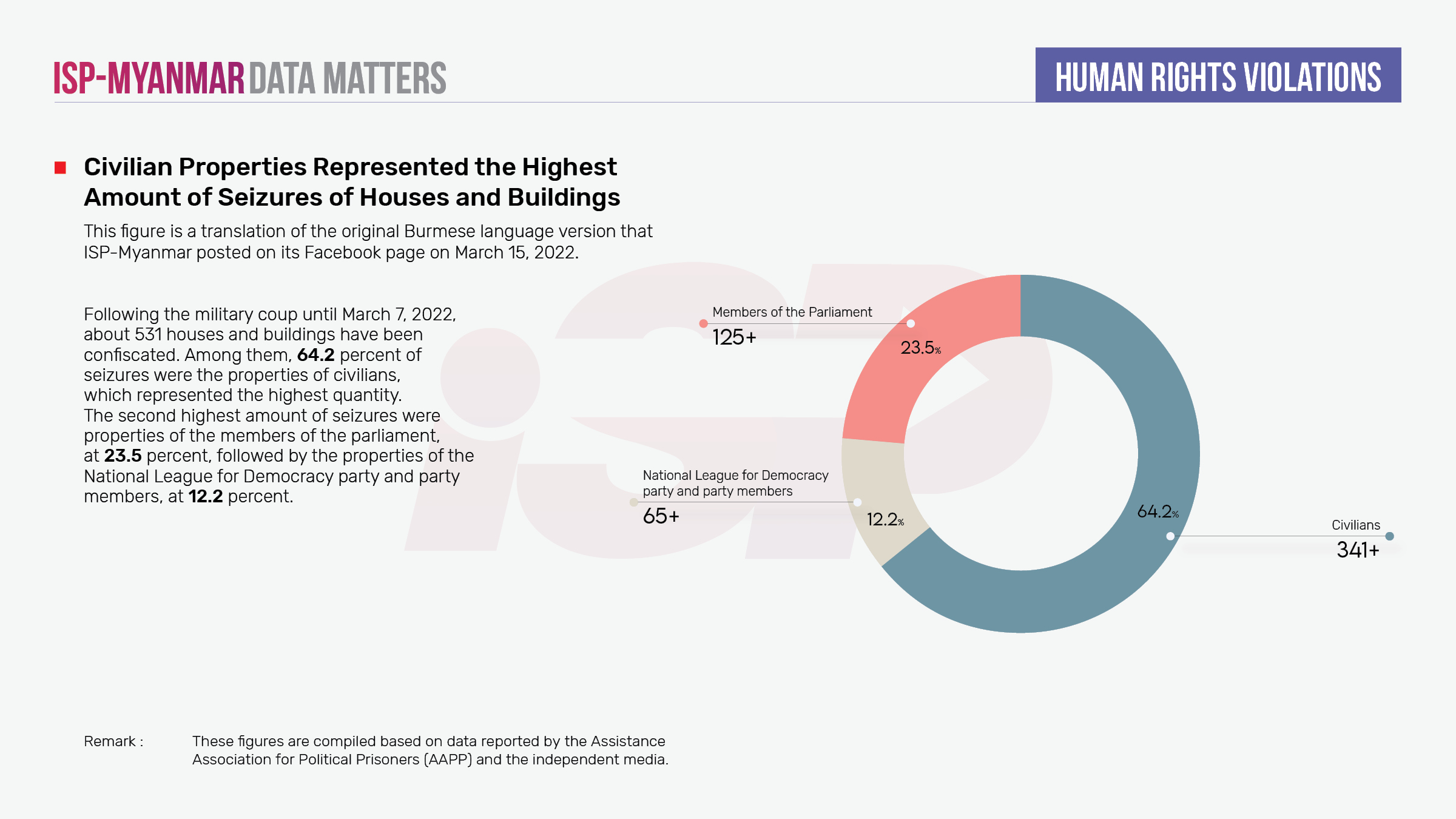Data Matters No. 8
(This article is a translation of the original Burmese language version that ISP-Myanmar posted on its Facebook page on March 15, 2022.)




As of March 7, 2022, the State Administration Council (SAC) has confiscated at least 531 homes and buildings (in connection with anti-military activities) in the aftermath of the military coup, according to data compiled by ISP-Myanmar, as well as a separate dataset compiled by the Assistance Association for Political Prisoners (AAPP). Most of the seizures took place in the Sagaing Region, with at least 135 units being seized. Meanwhile, 116 units in the Yangon Region, 85 units in the Mandalay Region, 47 units in the Ayeyarwady Region, and 39 units in the Magway Region were also seized, according to reports. These figures are only based on presently available data, and thus the actual figures may be much higher.
The SAC has been seizing houses since February 2021 and has stepped up its efforts since September 7, 2021, when the National Unity Government (NUG) announced the start of a resistance war. In particular, the houses and buildings affiliated with the Committee Representing Pyidaungsu Hluttaw and local defense forces (PDF/LDF/CDF//KNDF), including the National Unity Government, have been targeted and sealed off. Afterward, the SAC has confiscated homes and apartments of people facing the junta’s anti-terrorism lawsuits, people associated with the Civil Disobedience Movement, and people involved in the silent protests.
∎ Why does it matter?
An analysis of the confiscation of the properties associated with people imprisoned since the February coup within various categories since the February coup demonstrates the SAC’s use of pillars of justice to suppress its opponents. Studying these figures offers a way to assess whether or not Myanmar’s armed forces are using the justice system to crack down on its opponents from the perspective of transitional justice.
∎ Other relevant readings
Independent media and independent organizations such as the Assistance Association for Political Prisoners (AAPP) have monitored and collected detailed data on the number of people arrested for participating in anti-coup protests and the seizure of properties belonging to protesters and activists that have been in-hiding since February 1 military coup.

